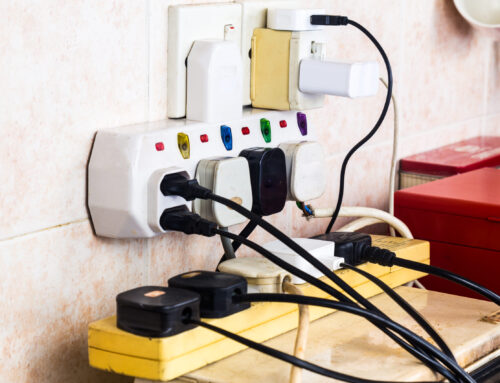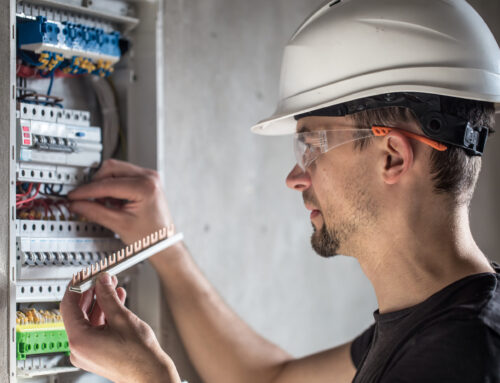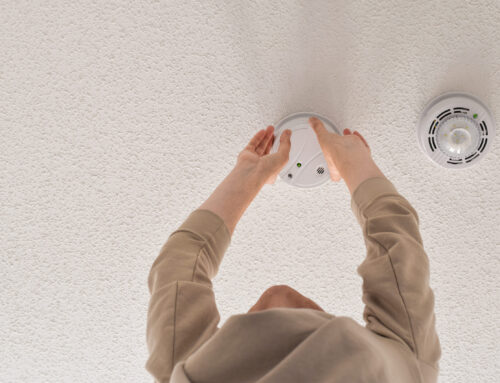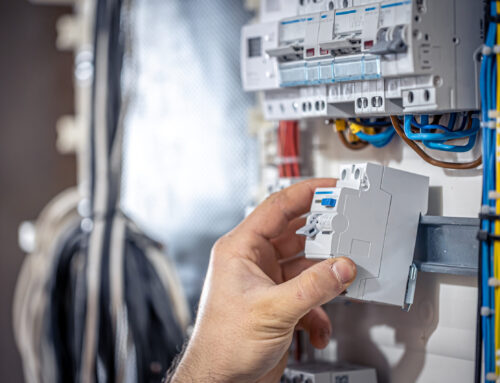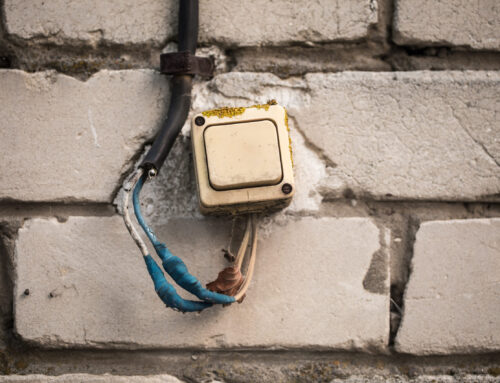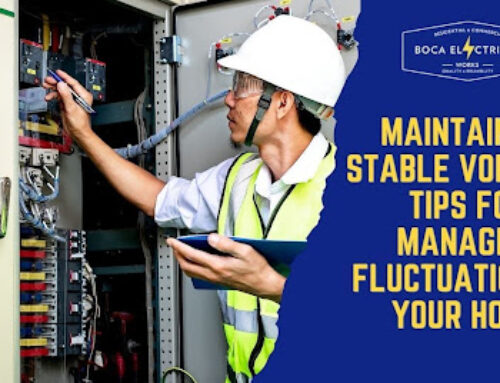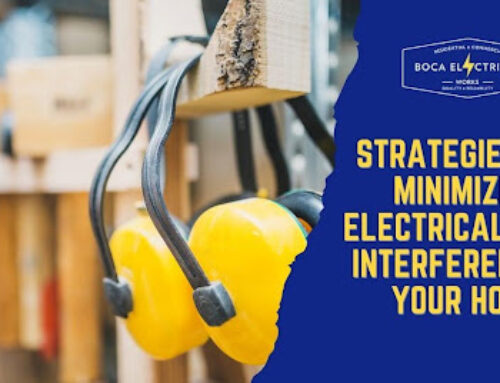Welcome to an illuminating exploration into the essential practices of grounding and bonding in electrical systems. As electrical networks weave through our modern lives, understanding the fundamentals of grounding and bonding becomes paramount. How do these practices truly fortify our safety amidst the currents coursing through our homes and workplaces? In this comprehensive guide, we delve deep into the intricacies of grounding and bonding, shedding light on their critical roles in safeguarding against electrical hazards.
Grounding and Bonding Basics
Grounding and bonding are foundational principles in electrical safety, serving as essential components of electrical systems worldwide. Grounding establishes a secure pathway for electrical currents to flow into the earth, while bonding creates a low-resistance connection between conductive surfaces. Together, they provide critical protection against electrical shocks, fires, and equipment damage, bolstering the resilience and reliability of electrical systems.
- Grounding: Establishes a safe path for electrical currents
- Bonding: Creates low-resistance connections between surfaces
- Protection against electrical hazards
What is Electrical Grounding?
Electrical grounding, often simply referred to as grounding, is a crucial aspect of electrical systems and installations. It involves establishing a connection between an electrical circuit or device and the Earth or a conducting body that serves as a reference point for electrical potentials.
Understanding Electrical Bonding
Electrical bonding creates a conductive path between metal surfaces, ensuring equipotentiality and mitigating the risk of stray currents. Techniques like bonding conductors, clamps, and fittings ensure a low-impedance connection, safeguarding against electrostatic discharge and potential hazards. There are several types of grounding, including:
- Safety Ground (Protective Ground): This is the connection of electrical equipment or systems to the Earth to prevent electric shock in case of a fault. It involves connecting metal parts of appliances or electrical enclosures to the ground.
- Equipment Ground: This involves connecting non-current-carrying metal parts of electrical equipment to the ground to prevent shock hazards and provide a path for fault currents.
- Signal Ground: In electronic circuits, a reference point is established for signals to ensure stable voltage levels and reduce noise. Signal ground is often separate from safety ground to prevent interference.
- Lightning Ground: Structures such as buildings or transmission towers are grounded to dissipate lightning strikes safely into the ground, protecting the structure and its occupants.
Proper grounding practices are essential in electrical installations to ensure safety, protect equipment, and maintain reliable operation. Regulations and standards govern grounding requirements in various industries to mitigate risks and ensure compliance with safety standards.
Importance of Grounding and Bonding
Proper grounding and bonding are non-negotiable when it comes to electrical safety. Real-life examples underscore the dire consequences of inadequate grounding, from electrical shocks to equipment malfunction. Compliance with regulations and industry standards is imperative to uphold safety and mitigate liabilities.
- Safety: Grounding and bonding redirect fault currents away from people and equipment, reducing the risk of electric shock.
- Equipment Protection: Grounding safeguards electronic components from damage caused by transient voltages and lightning strikes.
- Fire Prevention: Effective grounding prevents overheating and arcing, reducing the risk of electrical fires.
- EMI Mitigation: Proper grounding minimizes electromagnetic interference in electrical systems.
- Static Electricity Dissipation: Grounding and bonding safely dissipate static charges to prevent electrostatic discharge.
- Compliance: Following regulations ensures that electrical installations meet safety standards.
- System Functionality: Grounding and bonding maintain stable electrical currents and signals for reliable operation.
Grounding and bonding are essential aspects of electrical engineering and construction, providing critical safety measures, equipment protection, and ensuring the reliable operation of electrical systems. Adhering to best practices and standards for grounding and bonding helps mitigate risks, prevent accidents, and ensure compliance with regulatory requirements.
Ensuring Electrical System Safety
Effective grounding and bonding are the bedrock of electrical system safety. Debunking myths and misconceptions, we emphasize the importance of compliance with regulatory standards. Regular inspections and testing are vital to maintaining the integrity of grounding and bonding systems, ensuring uninterrupted operation and peace of mind.
- Grounding and Bonding: Establish low-resistance paths for fault currents to prevent electric shock.
- Proper Installation: Ensure wiring, devices, and equipment are installed correctly according to codes and standards.
- Overcurrent Protection: Use circuit breakers or fuses to interrupt circuits during overloads or faults.
- Regular Maintenance: Inspect, test, and maintain electrical systems to identify and address potential hazards.
- Arc Fault Protection: Implement devices to detect and mitigate arc faults, reducing the risk of fires.
- Ground Fault Protection: Utilize ground fault circuit interrupters (GFCIs) to prevent electric shock in wet or damp environments.
- Training and Education: Provide personnel with training on electrical safety practices and procedures.
- Emergency Procedures: Establish protocols for responding to electrical emergencies, including shutdown procedures and evacuation plans.
- Electrical Safety Devices: Install safety devices such as surge protectors and voltage regulators to protect against transient voltages.
Mitigating Electrical Hazards
Grounding and bonding play a pivotal role in mitigating electrical hazards, including electric shock, equipment damage, and power surges. Practical tips for implementing effective strategies, such as equipment bonding and surge protection, empower individuals and businesses to safeguard their premises against potential risks.
Compliance with Regulations and Standards

image for Understanding the Essentials of Grounding and Bonding in Electrical Systems
Adherence to regulatory requirements and industry standards is non-negotiable in the realm of grounding and bonding. The National Electrical Code (NEC) and the International Electrotechnical Commission (IEC) outline specific guidelines for various installations, underscoring the importance of compliance to ensure safety and avoid legal ramifications.
Compliance with regulations and standards is essential for ensuring the safety and reliability of electrical systems. Here are some key points to consider:
- Know the Applicable Regulations: Familiarize yourself with local, national, and international regulations governing electrical installations, such as the National Electrical Code (NEC), International Electrotechnical Commission (IEC) standards, or relevant building codes.
- Adherence to Safety Standards: Ensure that electrical installations meet the safety requirements outlined in regulations and standards. This includes proper grounding, bonding, overcurrent protection, and equipment selection.
- Regular Inspections and Audits: Conduct regular inspections and audits of electrical systems to ensure compliance with regulations and standards. Address any non-compliance issues promptly to mitigate risks.
- Certification and Licensing: Engage qualified professionals who hold appropriate certifications and licenses to design, install, and maintain electrical systems in accordance with regulations and standards.
- Documentation and Record-Keeping: Maintain comprehensive documentation of electrical installations, inspections, and maintenance activities. This includes records of compliance with regulations and standards, as well as any modifications or upgrades made to the system.
- Stay Updated: Stay informed about changes and updates to regulations and standards relevant to electrical installations. Continuously educate yourself and your team to ensure ongoing compliance.
- Seek Professional Guidance: When in doubt or dealing with complex regulatory requirements, seek guidance from experienced professionals or regulatory authorities to ensure full compliance.
By prioritizing compliance with regulations and standards, individuals and organizations can uphold the safety, reliability, and legality of their electrical installations, protecting both people and property from potential hazards.
Industry Best Practices
Industry best practices dictate meticulous installation techniques, equipment selection, and maintenance procedures for grounding and bonding systems. Regular inspections, testing, and documentation are paramount to uphold safety standards and ensure the longevity of electrical installations.
- Compliance with Regulations and Standards: Ensure strict adherence to relevant regulations, codes, and standards governing grounding and bonding practices in your industry. This includes staying updated on any changes or revisions to maintain compliance and ensure safety.
- Proper Design and Installation: Implement proper design principles and installation techniques for grounding and bonding systems. This involves sizing components correctly, selecting suitable materials, and following manufacturer guidelines to optimize system performance and reliability.
- Regular Maintenance and Testing: Establish a routine maintenance schedule to conduct inspections, tests, and assessments of grounding and bonding systems. This includes checking connections, measuring resistance, and identifying any signs of wear or degradation to address issues promptly.
- Employee Training and Awareness: Provide comprehensive training and awareness programs for personnel involved in the design, installation, maintenance, and operation of electrical systems. Ensure employees understand the importance of grounding and bonding for safety, and equip them with the knowledge and skills needed to implement best practices effectively.
By prioritizing these top four industry best practices, organizations can establish robust grounding and bonding systems that effectively mitigate electrical hazards, protect equipment, and ensure the reliable operation of electrical systems.
Key Takeaway
Grounding and bonding serve as indispensable pillars of electrical safety, forming the foundation for protecting lives and property from potential hazards. These practices establish vital connections that redirect fault currents, mitigate the risk of electric shock, and safeguard equipment against damage. By comprehensively understanding and diligently implementing proper grounding and bonding techniques, individuals and businesses can fortify their electrical systems against a wide range of risks. Whether in residential, commercial, or industrial settings, adherence to these practices ensures reliable operation and fosters a safer environment for all occupants.
FAQs – People Also Ask
- What are the consequences of inadequate grounding and bonding in electrical systems?
Inadequate grounding and bonding in electrical systems can lead to increased risk of electric shock, equipment damage, and fires due to uncontrolled fault currents.
- How often should grounding and bonding systems be inspected and tested?
Grounding and bonding systems should be inspected and tested regularly, ideally on an annual basis, to ensure their effectiveness and compliance with safety standards.
- Are there specific regulations governing grounding and bonding in residential properties?
Yes, there are specific regulations such as the National Electrical Code (NEC) in the United States that govern grounding and bonding requirements in residential properties.
- What are the key differences between electrical grounding and bonding?
The key difference between electrical grounding and bonding is that grounding establishes a connection to the earth, while bonding connects metal components together to ensure they are at the same electrical potential.
- Can improper grounding and bonding lead to electrical fires?
Improper grounding and bonding can indeed increase the risk of electrical fires by allowing fault currents to flow through unintended paths, leading to overheating and arcing.
Empower Your Electrical Safety: Mastering Grounding and Bonding Essentials with Boca Electrical Works!
At Bocaelectrical, we prioritize your safety and peace of mind. Contact us today to explore our comprehensive grounding and bonding services, tailored to meet your specific needs and ensure the integrity of your electrical systems. Let’s safeguard your property and occupants from potential electrical hazards together.



